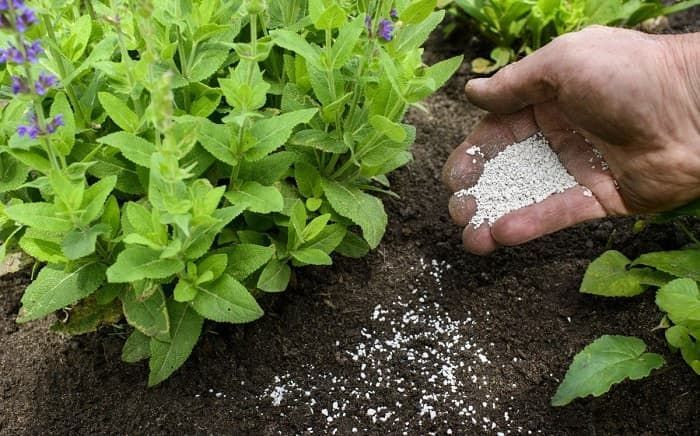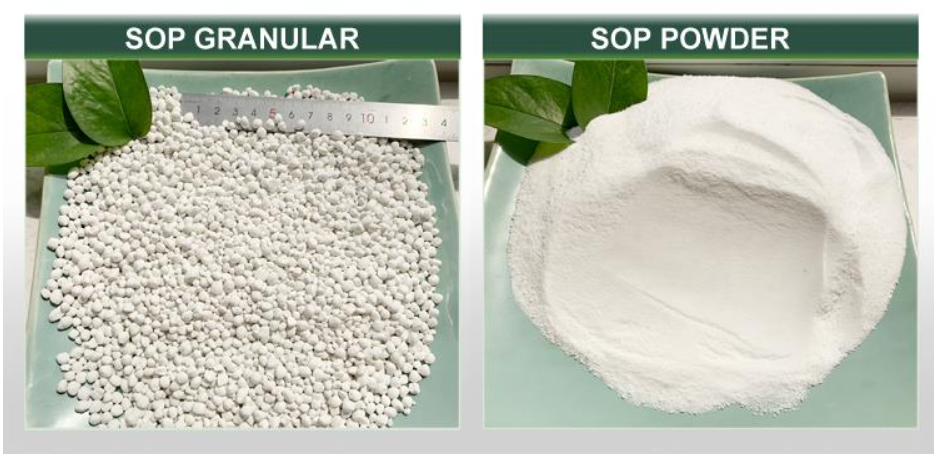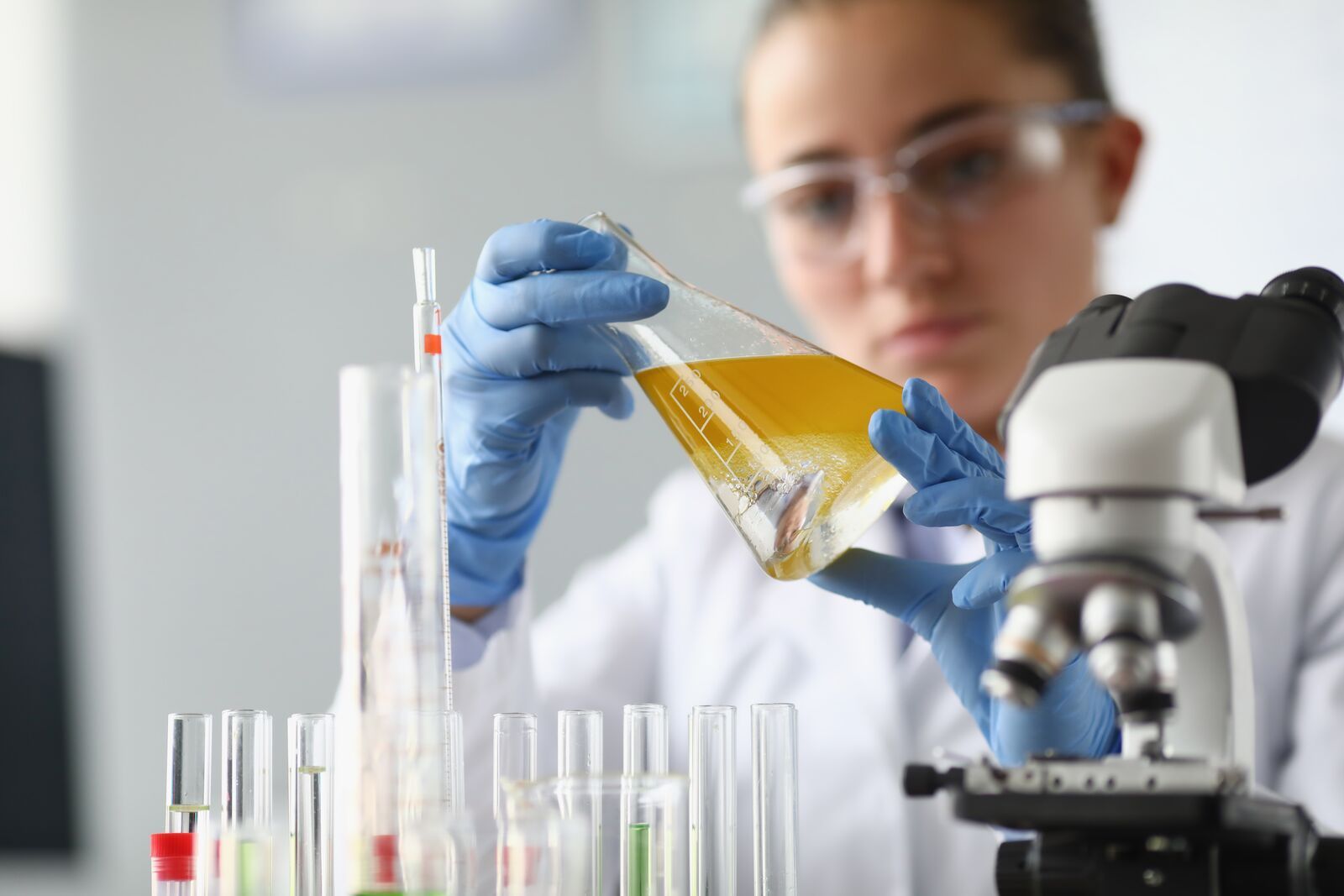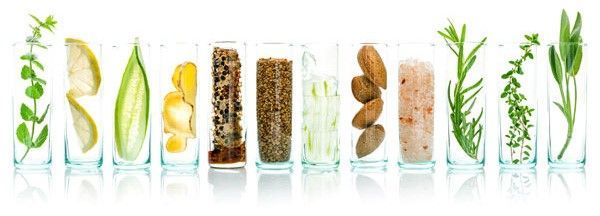Potassium Sulphate: A Premium Choice for Chloride-Sensitive Crops
In modern agriculture, the choice of fertilizer can significantly impact both crop yield and quality. Among potassium-based fertilizers, potassium sulphate (K₂SO₄) — also known as sulfate of potash (SOP) — stands out as a premium option, especially for crops sensitive to chloride. Unlike the more common potassium chloride (MOP), potassium sulphate delivers essential potassium without the potentially harmful chloride component, making it ideal for high-value, salt-sensitive crops such as fruits, vegetables, tobacco and tree nuts.
Potassium plays a critical role in plant health, enhancing drought resistance, improving nutrient uptake, and increasing the size, taste and shelf life of produce. Meanwhile, the sulphur in SOP supports enzyme activity and protein synthesis. As farmers and agronomists increasingly seek sustainable and crop-specific solutions, potassium sulphate has become an indispensable tool in precision fertilization. Its low salt index and dual nutrient benefits make it a cornerstone of quality-focused, high-efficiency agricultural practices worldwide.
As one of the main suppliers of potassium sulphate in the Balkan region,
DECACHEM provides high-quality SOP to meet the growing demands of modern, chloride-sensitive agriculture.
Understanding Chloride Sensitivity in Crops
Not all crops respond equally to the presence of chloride ions in the soil. While chloride is an essential micronutrient required in very small amounts for plant metabolism, excessive levels can be detrimental, particularly for certain high-value crops. Chloride-sensitive crops are especially vulnerable to salt stress caused by the accumulation of chloride ions, which can interfere with water uptake, nutrient absorption and overall plant physiology.
High concentrations of chloride can lead to leaf burn, reduced growth, and yield decline, particularly under conditions of limited water availability. These effects are often seen in sandy or poorly drained soils, or in arid regions where irrigation with saline water is common. In sensitive crops, chloride toxicity may also impair fruit quality, flavor and storage potential, making it a serious concern for commercial growers.
The physiological stress caused by chloride primarily affects stomatal function and osmotic balance within plant cells. When chloride accumulates in plant tissues beyond safe thresholds, it disrupts cellular processes, reduces photosynthesis efficiency and weakens disease resistance. As a result, avoiding excessive chloride input becomes crucial for maintaining both yield and quality in susceptible crops.
Common chloride-sensitive crops include:
- Grapes – Sensitive to both soil salinity and chloride toxicity, affecting vine health and wine quality.
- Citrus – High chloride levels can lead to leaf tip burn and reduced fruit production.
- Avocado – Particularly sensitive, with visible leaf damage and significant yield loss.
- Berries – Chloride can reduce sweetness, shelf life and overall fruit quality.
- Potatoes – Elevated chloride can affect tuber size, starch content and disease susceptibility.
For these crops, choosing low-chloride fertilizers like potassium sulphate is a smart agronomic strategy.
What is Potassium Sulphate (SOP)?
Potassium sulphate (K₂SO₄), also known as sulfate of potash (SOP), is a premium potassium fertilizer widely used in high-value and chloride-sensitive crops. Chemically composed of 50–52% potassium oxide (K₂O) and 17–18% sulfur (S), SOP provides two essential nutrients that are vital for plant growth and development. Potassium plays a key role in enhancing drought resistance, improving fruit quality and strengthening plant structure, while sulfur supports enzyme activation, protein synthesis and chlorophyll production.
What makes
SOP particularly valuable in modern agriculture is its very low chloride content, typically below 1.5%. This sets it apart from other potassium fertilizers — especially muriate of potash (MOP), which contains approximately 47% K₂O but over 45% chloride. For crops that are sensitive to chloride ions, such as grapes, citrus, berries and avocados, SOP is the preferred choice, as it eliminates the risk of chloride-induced stress and toxicity.
SOP also has a low salt index, making it gentler on plant roots and soil structure. It’s suitable for a range of application methods including broadcasting, fertigation and foliar spraying. Moreover, SOP is highly soluble and compatible with most nutrient programs, allowing for precise, efficient feeding throughout the growing season.
SOP vs MOP: What’s the Difference?
When comparing potassium sulphate (SOP) and muriate of potash (MOP), several critical
differences arise — especially in terms of nutrient content, chloride levels and crop compatibility.
Nutrient Content: SOP typically contains around 50% K₂O and 18% sulfur, while MOP contains about 60% KCl, which delivers 47% K₂O but no sulfur. SOP thus offers dual nutrient value.
Chloride Levels: MOP has a very high chloride content (over 45%), which can harm chloride-sensitive crops. In contrast, SOP is virtually chloride-free, making it safer for delicate plants.
Crop Suitability: MOP is suitable for chloride-tolerant crops like wheat, corn and sugar beets. SOP is ideal for chloride-sensitive and high-value crops, such as fruits, vegetables, tea and tobacco.
For growers seeking both high-quality yields and long-term soil health, SOP offers a superior alternative, especially where chloride sensitivity is a concern.
Key Benefits of Potassium Sulphate for Chloride-Sensitive Crops
For growers focused on maximizing both yield and quality, potassium sulphate (SOP) offers a powerful edge, particularly when cultivating chloride-sensitive crops. Its unique chemical profile delivers essential potassium and sulfur without the risks associated with chloride, making it ideal for fruits, vegetables and other high-value produce.
One of the most significant advantages of SOP is its ability to boost both yield and crop quality. Potassium plays a crucial role in photosynthesis, nutrient transport and enzyme activation, all of which contribute to stronger plant growth and higher productivity. The added sulfur improves nitrogen use efficiency and enhances protein synthesis, giving crops a more robust nutritional profile.
By avoiding high chloride levels, SOP minimizes the risk of chloride toxicity, which can otherwise lead to leaf burn, stunted growth and yield loss in sensitive crops like berries, grapes and avocados. SOP’s low salt index also reduces the potential for root damage and soil degradation.
Beyond quantity, SOP improves fruit taste, appearance and shelf-life. Higher potassium levels lead to sweeter fruits (higher Brix), better skin coloration and firmer texture - traits that are especially important in fresh produce markets.
Moreover, SOP enhances a plant’s resistance to abiotic and biotic stress, such as drought, extreme temperatures, and certain pests. Well-nourished crops are more resilient, reducing the need for additional interventions and helping growers achieve more sustainable farming practices.
Improved Crop Quality & Market Value
Farmers using potassium sulphate consistently report improvements in crop quality, visual appeal and marketability. SOP supports increased Brix levels (a measure of sugar content), which directly enhances the flavor and sweetness of fruits such as grapes, strawberries and citrus. This improvement not only appeals to consumers but also boosts market prices.
In real-world applications, SOP has been shown to improve color development in red-skinned apples and grapes, resulting in a more uniform and attractive product. In potatoes, SOP usage leads to better tuber firmness and size, while avoiding the internal discoloration often associated with chloride-based fertilizers.
One citrus grower in southern Spain noted a 20% increase in fruit shelf-life and fewer post-harvest losses after switching from MOP to SOP. Berry producers in Serbia have also observed firmer berries with longer storage potential, helping them meet export quality standards.
These results demonstrate how potassium sulfate does more than nourish the plant - it directly contributes to higher market value, consumer satisfaction and reduced waste throughout the supply chain. For growers seeking premium results, SOP is the clear choice.

Best Application Practices for Potassium Sulphate
To maximize the benefits of potassium sulphate (SOP), proper application methods and timing are essential. SOP is highly versatile and can be applied through soil incorporation, fertigation or foliar spraying, depending on crop type and growth stage.
Recommended dosages vary by crop and soil conditions. For example:
- Fruit trees (e.g., citrus, apple, avocado): 150–250 kg/ha annually, split into multiple applications
- Vegetables (e.g., tomatoes, peppers, lettuce): 100–200 kg/ha, depending on growth phase
- Berries: 80–150 kg/ha, with a focus on pre-flowering and fruiting stages
- Potatoes: 100–180 kg/ha applied pre-planting or in split doses
Soil application is ideal for pre-plant or early-season fertilization. SOP should be broadcast and incorporated into the root zone for optimal uptake. Fertigation, especially in drip-irrigated systems, allows for precise nutrient delivery throughout the growing season, reducing waste and improving efficiency. Foliar spraying is useful during high-demand periods, such as flowering and fruit development, to quickly correct deficiencies and boost quality.
Seasonal timing is important - apply SOP early in the growth cycle to support strong root development, and again during flowering and fruit setting to maximize yield and quality. Avoid late-season overapplication, which can reduce storage potential and disrupt nutrient balance.
Monitoring soil and leaf nutrient levels can help fine-tune the SOP application strategy for each farm.
For reliable results and product quality, growers across the world trust
DECACHEM for the potassium sulphate supply, ensuring effective and crop-safe fertilization throughout the season.
SOP Application in Organic Farming
Potassium sulphate is permitted for use in certified organic farming, provided it is mined and not chemically synthesized. Natural SOP meets the criteria set by most international organic standards, including the EU Organic Regulation and USDA National Organic Program.
In sustainable farming systems, SOP is valued for its low environmental impact, chloride-free composition, and support for soil health. Unlike synthetic fertilizers with high salt or chloride levels, SOP promotes balanced nutrition without harming beneficial soil microbes or increasing salinity.
Its dual role in supplying both potassium and sulfur makes SOP an efficient, eco-friendly option for organic growers aiming to produce nutrient-rich, marketable crops while maintaining long-term soil vitality.
Environmental and Soil Health Advantages
One of the key reasons potassium sulphate (SOP) is favored in modern and sustainable agriculture is its environmental friendliness and positive impact on soil health. Unlike other potassium fertilizers, particularly potassium chloride (MOP), SOP has a low salinity index, which means it is less likely to cause salt stress in plants or degrade soil quality over time.
High salinity in fertilizers can lead to osmotic stress, inhibiting a plant’s ability to absorb water and nutrients. SOP’s low salt index makes it gentler on root systems and safer for repeated use, especially in greenhouse production, arid regions and long-term crop cycles.
Additionally, SOP helps preserve soil structure by avoiding the buildup of harmful salts. Over time, repeated use of chloride-rich fertilizers like MOP can lead to salt accumulation, reducing soil permeability and negatively affecting microbial activity. SOP, with its minimal chloride content, significantly reduces this risk, supporting better water infiltration, aeration and root development.
For farmers concerned about sustainable land use and long-term productivity, SOP is a smart investment. It not only feeds crops efficiently, but also protects one of agriculture’s most valuable assets: healthy, fertile soil.
Choosing the Right SOP Product: Buyer’s Guide
Selecting the right potassium sulphate (SOP) product is essential to achieving optimal results in crop performance and soil health. Not all SOP fertilizers are created equal — quality, form and purity matter significantly.
When evaluating SOP, look for products with at least 50% K₂O and 17–18% sulfur content, along with very low chloride levels (typically below 1.5%). A good SOP should be free-flowing, low in dust and free from impurities like heavy metals or excess sodium, which can harm plants and soil.
Buyers should also consider whether they need granular or soluble SOP:
- Granular SOP is ideal for broad-acre and field applications. It offers slow, consistent nutrient release and is often used in base fertilization.
- Soluble SOP is designed for fertigation and foliar applications, where precise, rapid nutrient uptake is required, especially in greenhouse or drip irrigation systems.
For added confidence, choose SOP products that carry certifications such as ISO, REACH compliance, or organic approvals, depending on your production goals.

FAQs
Can SOP be mixed with other fertilizers?
Yes, potassium sulphate (SOP) is compatible with many commonly used fertilizers, especially those free from calcium or magnesium in the same solution. It mixes well with nitrogen and phosphorus sources in fertigation systems. However, avoid combining SOP with calcium-containing fertilizers in concentrated stock solutions, as this can cause precipitation. Always perform a compatibility test before mixing products.
Is SOP safe for hydroponics?
Absolutely. SOP is highly suitable for hydroponic systems, especially when chloride-sensitive crops are grown. Its high solubility and low salt index make it ideal for delivering potassium and sulfur without causing salt buildup or nutrient imbalance in the root zone. For hydroponic use, opt for fully water-soluble SOP, and monitor electrical conductivity (EC) and nutrient ratios closely.
What’s the difference between SOP and potassium nitrate?
Both SOP and potassium nitrate (KNO₃) supply potassium, but they differ in their secondary nutrients and applications. SOP provides sulfur, essential for protein synthesis, while potassium nitrate supplies nitrogen, which supports vegetative growth. SOP is better suited for crops with sulfur needs and during fruiting phases, while potassium nitrate is ideal earlier in the growing cycle when nitrogen demand is higher.
How often should SOP be applied to fruits and vegetables?
The frequency of SOP application depends on crop type, soil fertility, and growing method. In general, SOP can be applied pre-planting as a base fertilizer and then supplemented through fertigation or foliar spray during key growth stages such as flowering and fruit development. Split applications throughout the season help maintain optimal potassium levels without overloading the soil. For best results, follow a soil and tissue testing program to guide dosage and timing.
Final Thoughts: Why SOP is a Smart Investment for Sensitive Crops
Potassium sulphate (SOP) stands out as a premium fertilizer choice for growers aiming to protect chloride-sensitive crops while boosting yield, quality, and resilience. Its low chloride content, high potassium and sulfur availability, and gentle impact on soil make it a reliable solution for both conventional and sustainable farming systems. From improving fruit taste and shelf-life to minimizing salt stress and preserving soil health, SOP offers clear advantages over alternative potassium sources like MOP.
For farmers cultivating high-value crops such as berries, citrus, grapes, or avocados, SOP is more than a nutrient input — it’s a strategic investment in long-term productivity and market competitiveness.
To ensure consistent quality and performance, partner with trusted suppliers like
DECACHEM. If you're planning your next fertilization strategy, consider including SOP to support healthier crops, better yields and sustainable growth across every season.
















